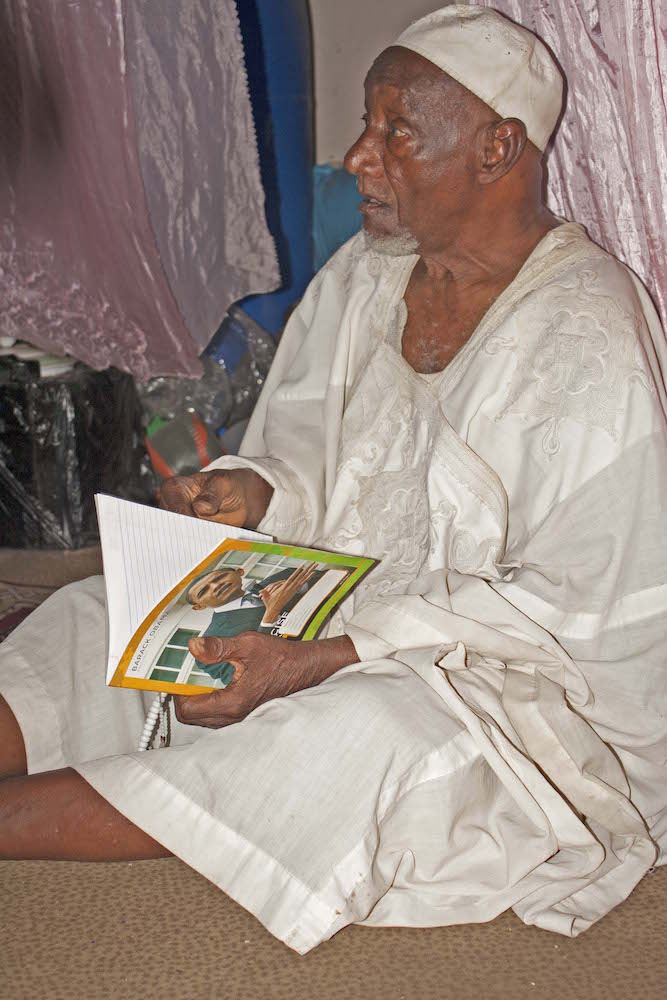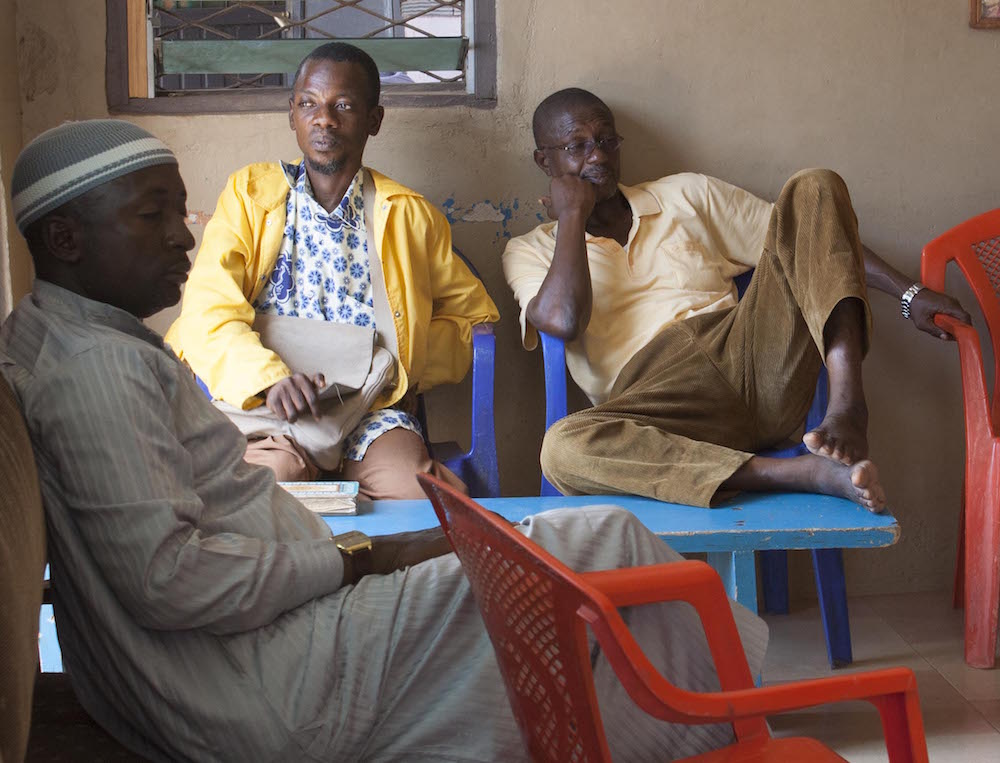Public Face of Islam in Kumasi
By Gracia Clark
Placeholder text -- for Men
Format: Image-MovingImage/mp4
Aluminum casting has no logical connection to Islam, but has become an occupation identified with Muslims in Kumasi. Decades ago, the VALCO aluminum refinery at the Volta Dam produced quantities of scrap metal from its smelters and manufacturing processes. Northerners predominated in recycling cardboard, paper, and other metal scrap, so they became expert in recycling this aluminum into sturdy cooking pots of many sizes for sale all over Ghana. The complicated melting and casting process uses lost wax molds made of sand, also used by Asante brass and goldsmiths for making their renowned gold weight figures, gold jewelry, and even spare keys. The close-knit community of workshops in one spot helps expand markets fort he pots by reassuring buyers of their standard size and quality..
Format: Image-MovingImage/mp4
Video Footage Scene Comments Start (00:00:00) Families returning from the noon prayer at Kumasi Central Mosque on Eid-al-Fitr, 2011. 00:00:12 The followers of a popular local teacher surround him and his family, as the last vehicles allowed pass. 00:01:16 Note hawkers with head loads and pushcarts as the street clears. Pairs of young men and sets of women walk along. 00:01:40 Boys claiming good viewing positions near local vendors' tables and kiosks. 00:02:15 The first chiefs' umbrellas come into view at the top of the street. Community members crowd the street and watch from uncompleted buildings. 00:02:25 Muslim chiefs riding on trucks, using Asante-style umbrellas and wearing richly embroidered robes, typically Hausa. Their crowds of followers merge with onlookers. One group wears matching cloths and headscarves in bright green, a color favored by the Prophet. 00:03:31 Important attendant rides a horse, a very expensive luxury in this climate. A chief in Fulani-style dress with green veil displays a less Islamic ethnic tableau on the roof of the truck cab. Children in matching outfits ride in back. 00:03:40 Women and chief dancing on truck. Fly whisks made of horse's mane. 00:03:54 Upper Region ethnic drumming and dance. Men in smocks, some women in "traditional" non-Islamic dress. 00:04:25 Women in green uniform cloth with headscarves and/or lace veils dancing together. Men playing trombones. 00:05:00 Street level views of uniforms, hawkers. 00:05:20 Banner carried by constituents of local chief of Yoruba immigrants. 00:05:36 Young man in white brocade, showing off his horsemanship---or not. 00:06:00 Northern Region chief in embroidered smock, dancing for the crowd. 00:06:30 Ethnic chief of Upper Region residents in Kumasi. His Asante-style headband has gold medallions, and he wears a metallic brocade robe over a handwoven white and indigo smock. Followers hold banner with portraits of male and female leaders. 00:06:58 Sub-chiefs on horses with young sons riding in front. Note policemen passing by. 00:07:29 Zongo chief riding horse with gold trappings, in white flowing robes One set of palace guards wears red turbans, other elders in other matching turbans or outfits. Note men taking photos, two men holding umbrellas. Regalia include silver helmet, sheer lace veils on men and horse. 00:09:30 Crowds seen from our rooftop perch. Kente cloth umbrella in center shades the Asantehemma. Pickup trucks outnumber horses. Note slow and halting pace of parade, allowing more dancing. Men and women in casual modern dress join in. 00:12:00 Brass band with snare and bass drum. Good dancers show off for friends taking video. 00:13:14 Expert dancers from Upper Region whirl their heavy smocks, to music from traditional drums and clay flutes. 00:14:43 Drummer dances up to a "big man" in smock, who puts paper money on the drummer's forehead and then joins in the dancing. A young woman in "generic modern Ghanaian" pink cloth outfit tips drummer, then waves her pink purse and white handkerchief at "big man." When she starts dancing, he tips her liberally.
Format: Image-MovingImage/mp4
Several months before it was time to start on the Hajj pilgrimage to Mecca, members of this mosque in Kumasi who had made the pilgrimage decided to stage this reenactment of the various stages of the ritual, so that those going that year would know what to expect. Since the pageant took place inside the mosque itself, its degree of realism was limited, but the coordinators took care to preserve the correct sequence of events. Quite a large group acted as the pilgrims and arrived by plane, settled at their camping site, mimed cleansing themselves and changed into white pilgrim garb. All those from Ghana would camp together, and some had Ghana or its flag on their uniforms. Cardboard models of rocky heights were placed strategically around the room, where the pilgrims would cast away the devil and visit the site where Abraham had offered to sacrifice Isaac. An ornately decorated cube in the center represented the Q'aba, which both male and female groups circled a number of times, as the ritual climax. The scene was somewhat chaotic, with various people shouting instructions, but it also served to popularize the pilgrimage among those who had not planned to go.
Format: Image-MovingImage/mp4
"We should take more business, but the money is small. That is why we cannot do what we would like to do."
Format: Image-MovingImage/mp4
"You are supposed to live in mutual respect and kindness with your neighbor, if you have one, whether that neighbor is a believer or a non-believer."
Format: Image-MovingImage/mp4
"As a Muslim, your hands do not bother anyone, your mouth should not hurt anyone, your legs should not bother anyone, don't cheat, don't beat anyone, don't kill anyone, you see, this is what we call Muslim."
Format: Image-StillImage/jpeg
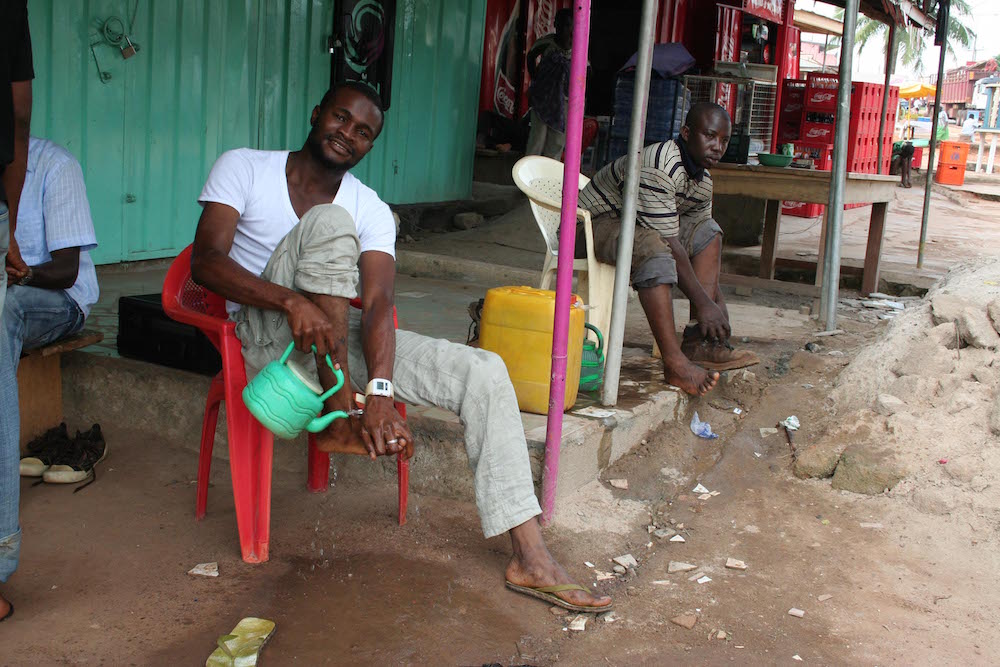
Washing feet, hands, and face prepares Muslims for each of there five daily prayers.
Format: Image-StillImage/jpeg
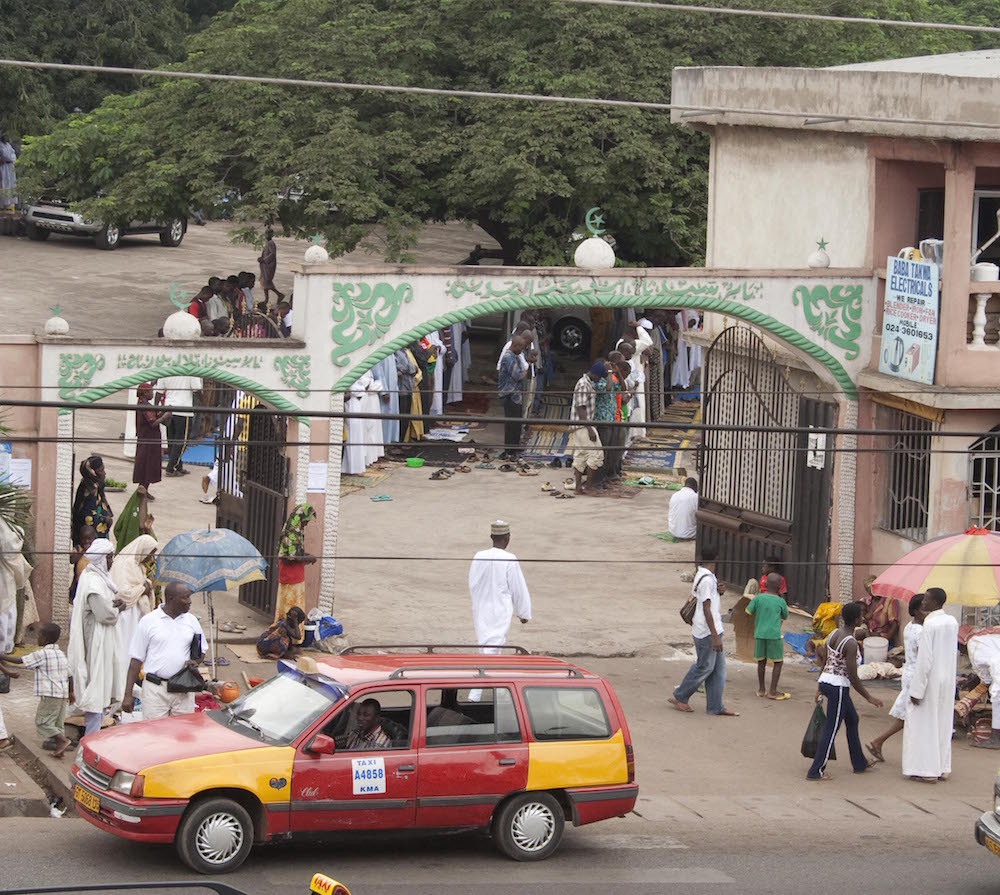
This group of men gather on Fridays in a side yard on the grounds of the Central Mosque.
Format: Image-StillImage/jpeg
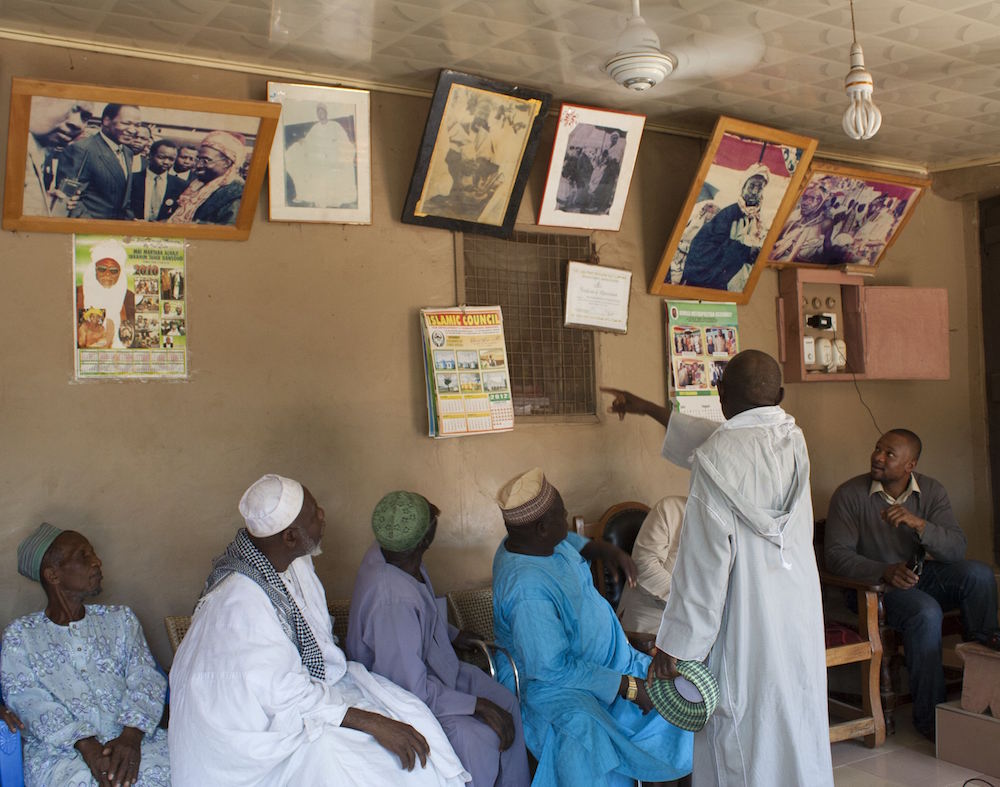
A leading elder explains the photographs in the Mossi chief's reception room.
A range of dress styles compatible with Muslim identity for men
Format: Image-StillImage/jpeg
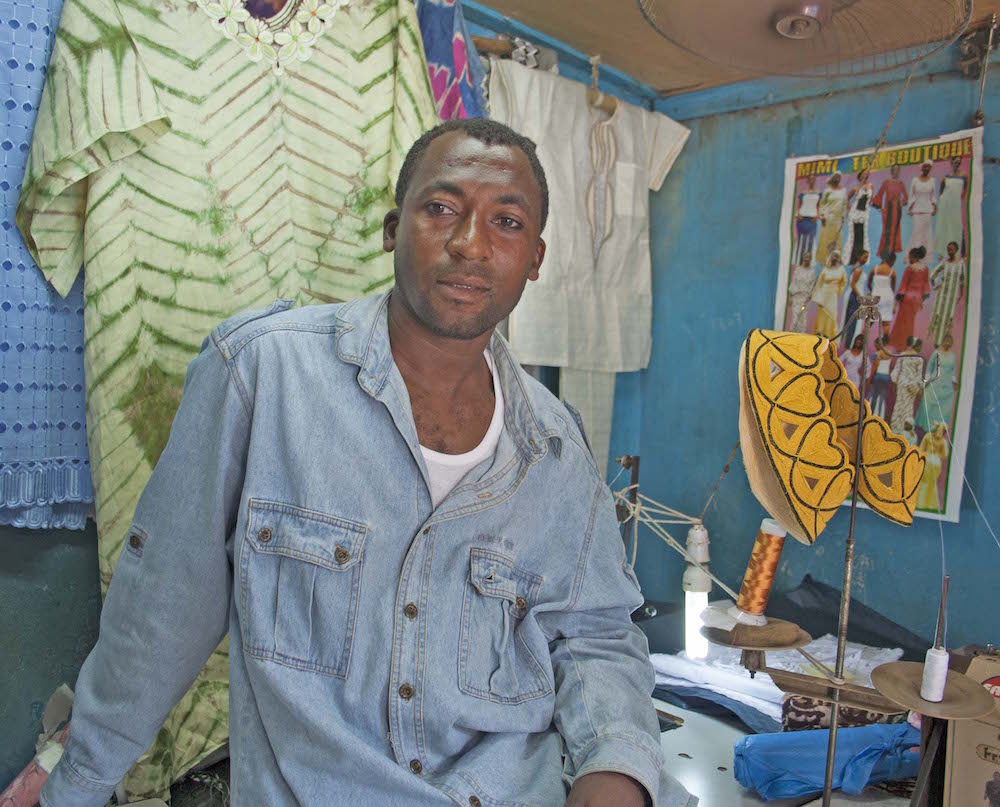
This tailor sews and embroiders men's and women's clothing. His father serves as Imam in another Ghanaian town.
Format: Image-StillImage/jpeg
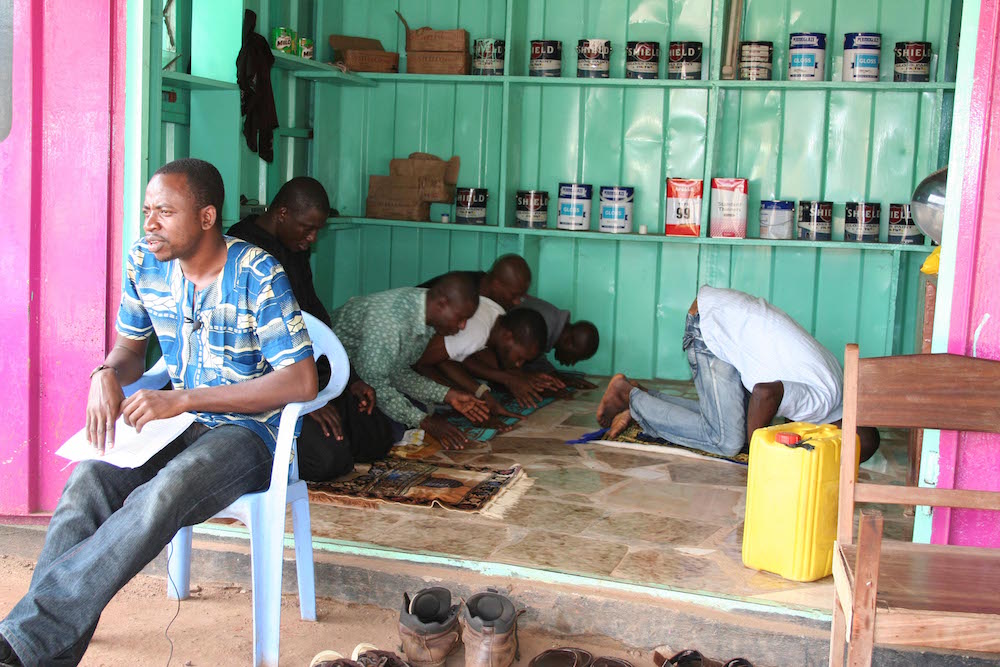
Young men who work in this neighborhood regularly gather for noon prayer inside this roadside shop made from a shipping container.
Format: Image-StillImage/jpeg
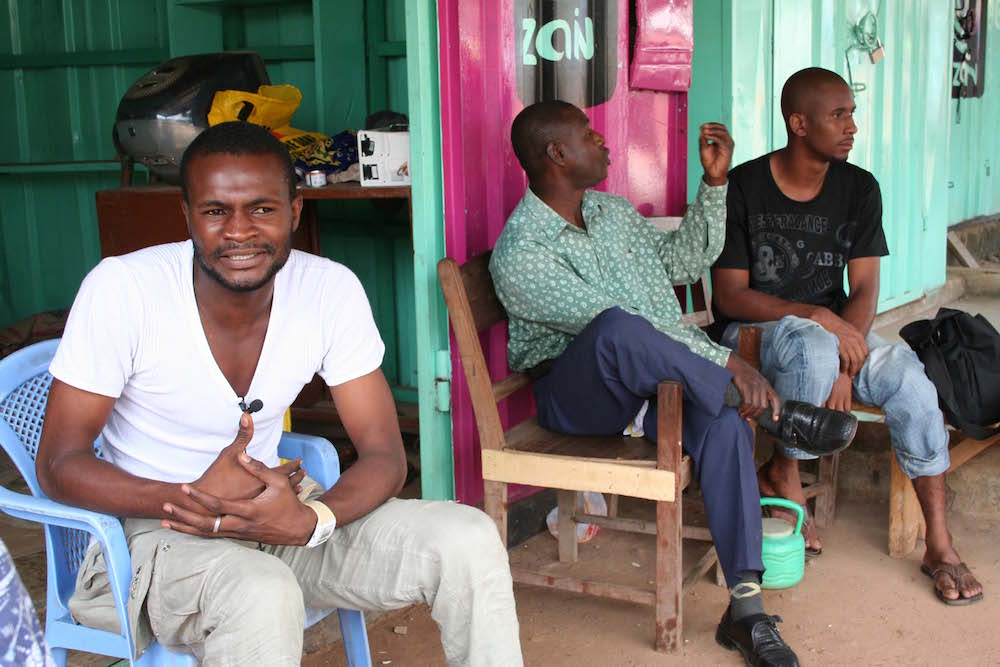
Young men meet in an informal afternoon discussion group.
Format: Image-StillImage/jpeg
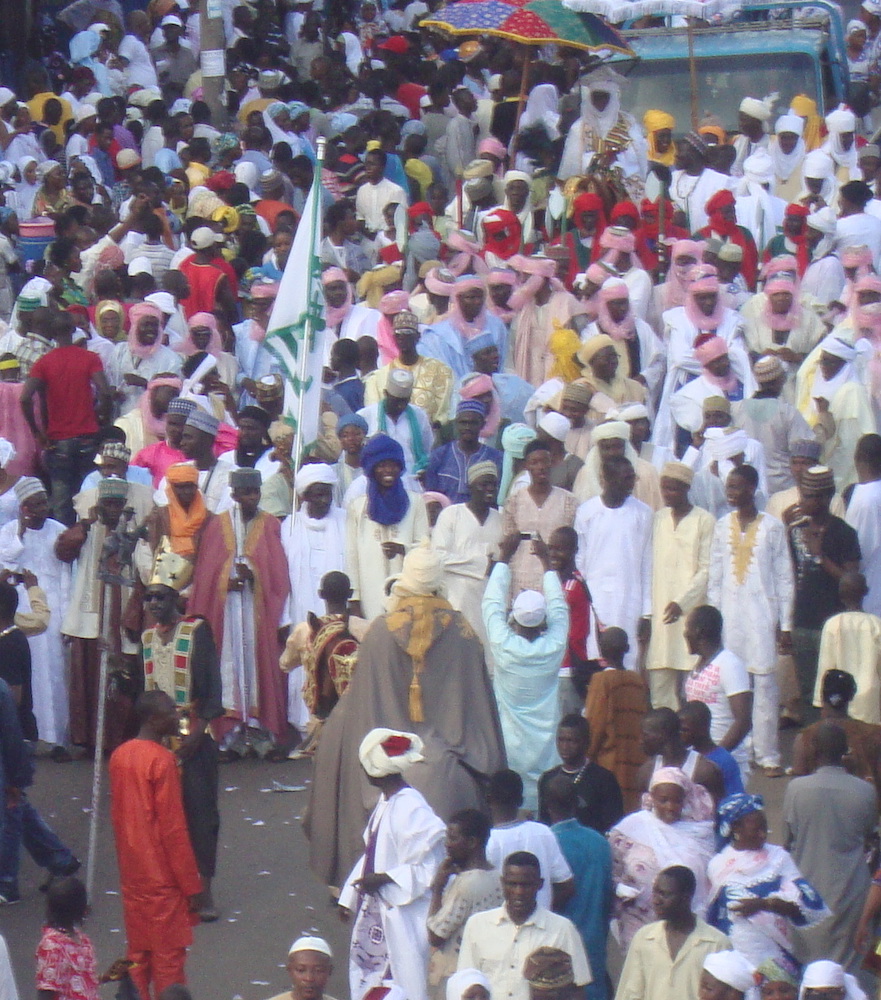
The Zongo Chief in procession with his entourage.
Aluminum Casting
Date: July 2009Format: Image-MovingImage/mp4
Aluminum casting has no logical connection to Islam, but has become an occupation identified with Muslims in Kumasi. Decades ago, the VALCO aluminum refinery at the Volta Dam produced quantities of scrap metal from its smelters and manufacturing processes. Northerners predominated in recycling cardboard, paper, and other metal scrap, so they became expert in recycling this aluminum into sturdy cooking pots of many sizes for sale all over Ghana. The complicated melting and casting process uses lost wax molds made of sand, also used by Asante brass and goldsmiths for making their renowned gold weight figures, gold jewelry, and even spare keys. The close-knit community of workshops in one spot helps expand markets fort he pots by reassuring buyers of their standard size and quality..
City Parade
Date: August 2011Format: Image-MovingImage/mp4
Video Footage Scene Comments Start (00:00:00) Families returning from the noon prayer at Kumasi Central Mosque on Eid-al-Fitr, 2011. 00:00:12 The followers of a popular local teacher surround him and his family, as the last vehicles allowed pass. 00:01:16 Note hawkers with head loads and pushcarts as the street clears. Pairs of young men and sets of women walk along. 00:01:40 Boys claiming good viewing positions near local vendors' tables and kiosks. 00:02:15 The first chiefs' umbrellas come into view at the top of the street. Community members crowd the street and watch from uncompleted buildings. 00:02:25 Muslim chiefs riding on trucks, using Asante-style umbrellas and wearing richly embroidered robes, typically Hausa. Their crowds of followers merge with onlookers. One group wears matching cloths and headscarves in bright green, a color favored by the Prophet. 00:03:31 Important attendant rides a horse, a very expensive luxury in this climate. A chief in Fulani-style dress with green veil displays a less Islamic ethnic tableau on the roof of the truck cab. Children in matching outfits ride in back. 00:03:40 Women and chief dancing on truck. Fly whisks made of horse's mane. 00:03:54 Upper Region ethnic drumming and dance. Men in smocks, some women in "traditional" non-Islamic dress. 00:04:25 Women in green uniform cloth with headscarves and/or lace veils dancing together. Men playing trombones. 00:05:00 Street level views of uniforms, hawkers. 00:05:20 Banner carried by constituents of local chief of Yoruba immigrants. 00:05:36 Young man in white brocade, showing off his horsemanship---or not. 00:06:00 Northern Region chief in embroidered smock, dancing for the crowd. 00:06:30 Ethnic chief of Upper Region residents in Kumasi. His Asante-style headband has gold medallions, and he wears a metallic brocade robe over a handwoven white and indigo smock. Followers hold banner with portraits of male and female leaders. 00:06:58 Sub-chiefs on horses with young sons riding in front. Note policemen passing by. 00:07:29 Zongo chief riding horse with gold trappings, in white flowing robes One set of palace guards wears red turbans, other elders in other matching turbans or outfits. Note men taking photos, two men holding umbrellas. Regalia include silver helmet, sheer lace veils on men and horse. 00:09:30 Crowds seen from our rooftop perch. Kente cloth umbrella in center shades the Asantehemma. Pickup trucks outnumber horses. Note slow and halting pace of parade, allowing more dancing. Men and women in casual modern dress join in. 00:12:00 Brass band with snare and bass drum. Good dancers show off for friends taking video. 00:13:14 Expert dancers from Upper Region whirl their heavy smocks, to music from traditional drums and clay flutes. 00:14:43 Drummer dances up to a "big man" in smock, who puts paper money on the drummer's forehead and then joins in the dancing. A young woman in "generic modern Ghanaian" pink cloth outfit tips drummer, then waves her pink purse and white handkerchief at "big man." When she starts dancing, he tips her liberally.
Pageant Enacting the Haj
Date: November 2011Format: Image-MovingImage/mp4
Several months before it was time to start on the Hajj pilgrimage to Mecca, members of this mosque in Kumasi who had made the pilgrimage decided to stage this reenactment of the various stages of the ritual, so that those going that year would know what to expect. Since the pageant took place inside the mosque itself, its degree of realism was limited, but the coordinators took care to preserve the correct sequence of events. Quite a large group acted as the pilgrims and arrived by plane, settled at their camping site, mimed cleansing themselves and changed into white pilgrim garb. All those from Ghana would camp together, and some had Ghana or its flag on their uniforms. Cardboard models of rocky heights were placed strategically around the room, where the pilgrims would cast away the devil and visit the site where Abraham had offered to sacrifice Isaac. An ornately decorated cube in the center represented the Q'aba, which both male and female groups circled a number of times, as the ritual climax. The scene was somewhat chaotic, with various people shouting instructions, but it also served to popularize the pilgrimage among those who had not planned to go.
A Spare Parts Dealer
Date: August 26, 2009Format: Image-MovingImage/mp4
"We should take more business, but the money is small. That is why we cannot do what we would like to do."
Muslims Do Not Behave Like That
Date: 2006Format: Image-MovingImage/mp4
"You are supposed to live in mutual respect and kindness with your neighbor, if you have one, whether that neighbor is a believer or a non-believer."
Zacharia and Yakubu Discussion
Date: September 6, 2009Format: Image-MovingImage/mp4
"As a Muslim, your hands do not bother anyone, your mouth should not hurt anyone, your legs should not bother anyone, don't cheat, don't beat anyone, don't kill anyone, you see, this is what we call Muslim."
Foot Washing Before Prayer
Date: 2009Format: Image-StillImage/jpeg

Washing feet, hands, and face prepares Muslims for each of there five daily prayers.
Friday Prayer Group
Date: 2009Format: Image-StillImage/jpeg

This group of men gather on Fridays in a side yard on the grounds of the Central Mosque.
Learning Zongo History
Date: 2011Format: Image-StillImage/jpeg

A leading elder explains the photographs in the Mossi chief's reception room.
Men Slideshow
Format: Image-StillImage/jpegA range of dress styles compatible with Muslim identity for men
Tailor and Imam's Son
Date: 2006Format: Image-StillImage/jpeg

This tailor sews and embroiders men's and women's clothing. His father serves as Imam in another Ghanaian town.
Work Neighbors Pray Together
Date: 2009Format: Image-StillImage/jpeg

Young men who work in this neighborhood regularly gather for noon prayer inside this roadside shop made from a shipping container.
Young Men
Date: 2009Format: Image-StillImage/jpeg

Young men meet in an informal afternoon discussion group.
Zongo Chief
Date: August 2011Format: Image-StillImage/jpeg

The Zongo Chief in procession with his entourage.
